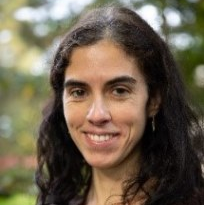Feature Papers for Clean Technologies 2021
A special issue of Clean Technologies (ISSN 2571-8797).
Deadline for manuscript submissions: closed (30 April 2022) | Viewed by 19700
Special Issue Editor
Interests: sustainability; chemical engineering; process intensification; membrane technology; CO2 capture; applied thermodynamics; life cycle assessment
Special Issues, Collections and Topics in MDPI journals
Special Issue Information
Dear colleagues,
Technological development and societal transformation are essential to face current challenges and achieve the Sustainable Development Goals. Researchers and technology developers thus play a critical role in providing novel sustainable solutions to reduce energy consumption, environmental pollution, and the use of water and non-renewable resources. Clean Technologies is an international journal whose aim is to show the most promising advances in sustainable technology. In this Special Issue called “Feature Papers”, we aim at outstanding contributions in the main fields covered by the journal:
- Chemical and biochemical engineering;
- Product and process engineering;
- Membrane technology;
- Environmental technology for treatment of wastewater, flue gases and solid waste;
- Zero-waste technology;
- CO2 capture and (re)utilization technologies;
- Green chemistry;
- Cleaner production and technical processes;
- Clean energies;
- Energy-saving technology;
- Microreaction and microseparation technology;
- Life cycle assessment.
We look forward to receiving your contribution.
Prof. Dr. Patricia Luis
Guest Editor
Manuscript Submission Information
Manuscripts should be submitted online at www.mdpi.com by registering and logging in to this website. Once you are registered, click here to go to the submission form. Manuscripts can be submitted until the deadline. All submissions that pass pre-check are peer-reviewed. Accepted papers will be published continuously in the journal (as soon as accepted) and will be listed together on the special issue website. Research articles, review articles as well as short communications are invited. For planned papers, a title and short abstract (about 100 words) can be sent to the Editorial Office for announcement on this website.
Submitted manuscripts should not have been published previously, nor be under consideration for publication elsewhere (except conference proceedings papers). All manuscripts are thoroughly refereed through a single-blind peer-review process. A guide for authors and other relevant information for submission of manuscripts is available on the Instructions for Authors page. Clean Technologies is an international peer-reviewed open access quarterly journal published by MDPI.
Please visit the Instructions for Authors page before submitting a manuscript. The Article Processing Charge (APC) for publication in this open access journal is 1600 CHF (Swiss Francs). Submitted papers should be well formatted and use good English. Authors may use MDPI's English editing service prior to publication or during author revisions.
Keywords
- sustainable technology
- membrane technology
- micro-technology
- clean energy
- green chemistry
- life cycle assessment





